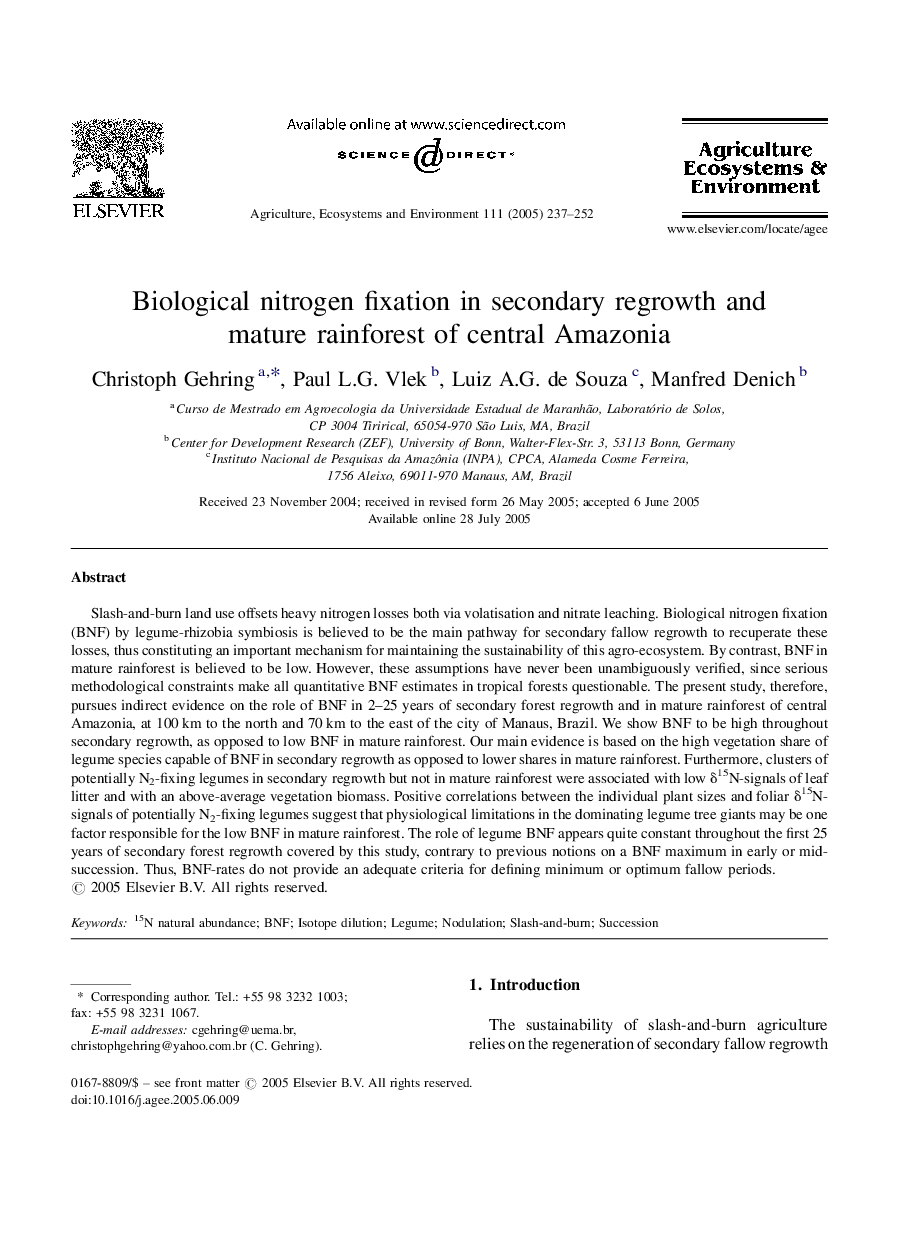| کد مقاله | کد نشریه | سال انتشار | مقاله انگلیسی | نسخه تمام متن |
|---|---|---|---|---|
| 8970732 | 1552152 | 2005 | 16 صفحه PDF | دانلود رایگان |
عنوان انگلیسی مقاله ISI
Biological nitrogen fixation in secondary regrowth and mature rainforest of central Amazonia
دانلود مقاله + سفارش ترجمه
دانلود مقاله ISI انگلیسی
رایگان برای ایرانیان
کلمات کلیدی
موضوعات مرتبط
علوم زیستی و بیوفناوری
علوم کشاورزی و بیولوژیک
علوم زراعت و اصلاح نباتات
پیش نمایش صفحه اول مقاله

چکیده انگلیسی
Slash-and-burn land use offsets heavy nitrogen losses both via volatisation and nitrate leaching. Biological nitrogen fixation (BNF) by legume-rhizobia symbiosis is believed to be the main pathway for secondary fallow regrowth to recuperate these losses, thus constituting an important mechanism for maintaining the sustainability of this agro-ecosystem. By contrast, BNF in mature rainforest is believed to be low. However, these assumptions have never been unambiguously verified, since serious methodological constraints make all quantitative BNF estimates in tropical forests questionable. The present study, therefore, pursues indirect evidence on the role of BNF in 2-25 years of secondary forest regrowth and in mature rainforest of central Amazonia, at 100 km to the north and 70 km to the east of the city of Manaus, Brazil. We show BNF to be high throughout secondary regrowth, as opposed to low BNF in mature rainforest. Our main evidence is based on the high vegetation share of legume species capable of BNF in secondary regrowth as opposed to lower shares in mature rainforest. Furthermore, clusters of potentially N2-fixing legumes in secondary regrowth but not in mature rainforest were associated with low δ15N-signals of leaf litter and with an above-average vegetation biomass. Positive correlations between the individual plant sizes and foliar δ15N-signals of potentially N2-fixing legumes suggest that physiological limitations in the dominating legume tree giants may be one factor responsible for the low BNF in mature rainforest. The role of legume BNF appears quite constant throughout the first 25 years of secondary forest regrowth covered by this study, contrary to previous notions on a BNF maximum in early or mid-succession. Thus, BNF-rates do not provide an adequate criteria for defining minimum or optimum fallow periods.
ناشر
Database: Elsevier - ScienceDirect (ساینس دایرکت)
Journal: Agriculture, Ecosystems & Environment - Volume 111, Issues 1â4, 1 December 2005, Pages 237-252
Journal: Agriculture, Ecosystems & Environment - Volume 111, Issues 1â4, 1 December 2005, Pages 237-252
نویسندگان
Christoph Gehring, Paul L.G. Vlek, Luiz A.G. de Souza, Manfred Denich,